Kayla: From awareness to understanding and acceptance
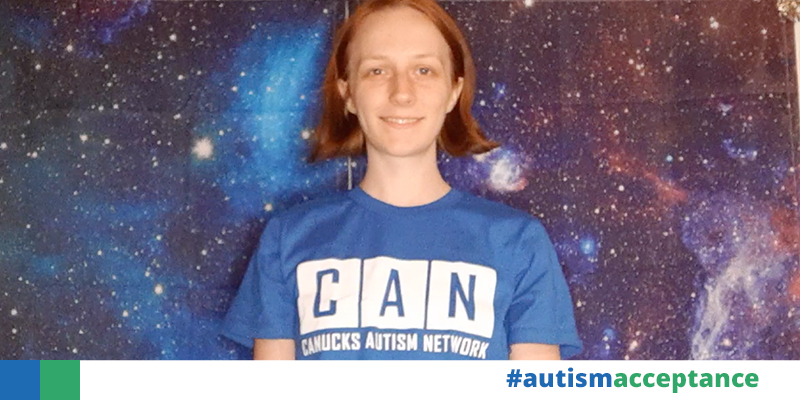
Kayla is a CAN support worker and incredibly active self-advocate in our community. She is one of the nine autistic voices featured in our Autism Acceptance Month video released earlier this month.
Kayla ends the video by stating, “Autism acceptance means every child and youth on the spectrum and every autistic adult has every opportunity to be who they want to be.”
As we end Autism Acceptance Month, we want to highlight Kayla’s story. What does she want our community to know about autism? How can we be part of the solution to ensure that her vision may come to fruition in our society?
April 30, 2021
by Kayla
Growing up with undiagnosed autism was hard at times. We sort of knew when I was little, but the doctor who tested me told my mom that she was just being overprotective. I struggled through school with making and keeping friends.
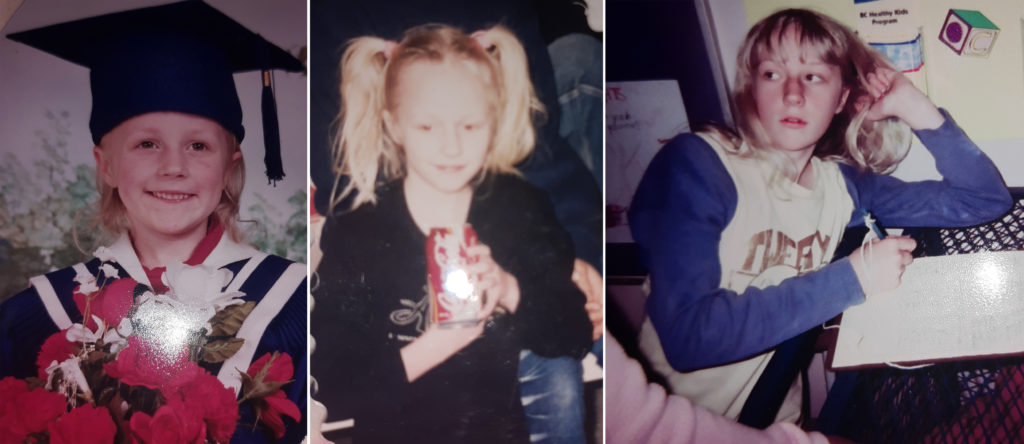
Nobody would tell me when I did something that bothered them. I didn’t know how others were feeling because I couldn’t read their body language or any other nonverbal signs.
I wish they would have just told me directly how they felt. Mom always did her best to teach me what I might have done differently after each social situation. But it was always hard to understand what I might have done wrong without others being direct with me.
My younger brother has Down Syndrome, so we were led to a lot of family support groups for parents of children with diverse needs. Luckily, this gave my mom people to talk to who could help her figure out how to help me – even without a diagnosis.
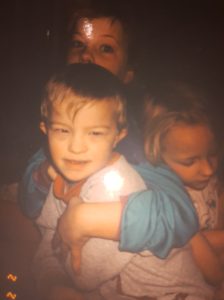
Kayla (right) and her siblings.
My brother even had a speech therapist who recognized my struggles. Amazingly, she gave me communication therapy even though we couldn’t afford it. She also gave me my favorite stim toy that I still use to this day.
I was starting college when I finally got my autism diagnosis.
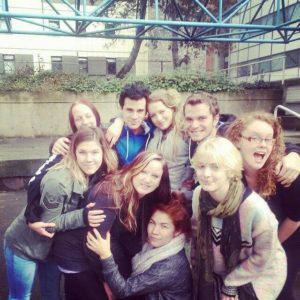
Kayla in her college years (top row, first from the left).
It led me to do more research, better understand what was going on in my brain, and explain it to others. At the same time, I also met some pretty amazing people who gave me what I needed and communicated their needs directly and verbally.
They would tell me things like “I like your hugs Kayla, but sometimes I don’t feel like being touched, can you ask first?” Or they would let me know when I said things that could be misinterpreted just by the order I put the words in.
They knew I never meant to hurt anyone or make anyone uncomfortable. I just honestly didn’t know until someone verbalized it.
I also got criticized and bullied a lot for stimming (ex. jumping up and down and flapping my arms when I got excited) growing up. And at some point, my brain created this auto-switch so that when I started to stim in front of others I would stop. Then I’d get so uncomfortable, I’d feel like tearing off my skin. But I didn’t know why.
One day, early on in college, this happened in front of one of my classmates. She turned to me and said “Why did you stop?” I asked her what she meant, because at the time I didn’t even realize that this was happening.
She said “That hoppy thing you were doing. It was adorable and it made me so happy. Why did you stop?” I thought about it and I honestly I didn’t know.
I didn’t even realize that masking my stimming had become an auto defense mechanism.
Luckily, I had chosen to go to acting school. A big part of learning to act is exploring different sides of yourself so that you can use them to become someone else. Another part was learning how to step out of character after you’ve created them. That’s something that not every teacher thinks to teach, but thankfully mine did.
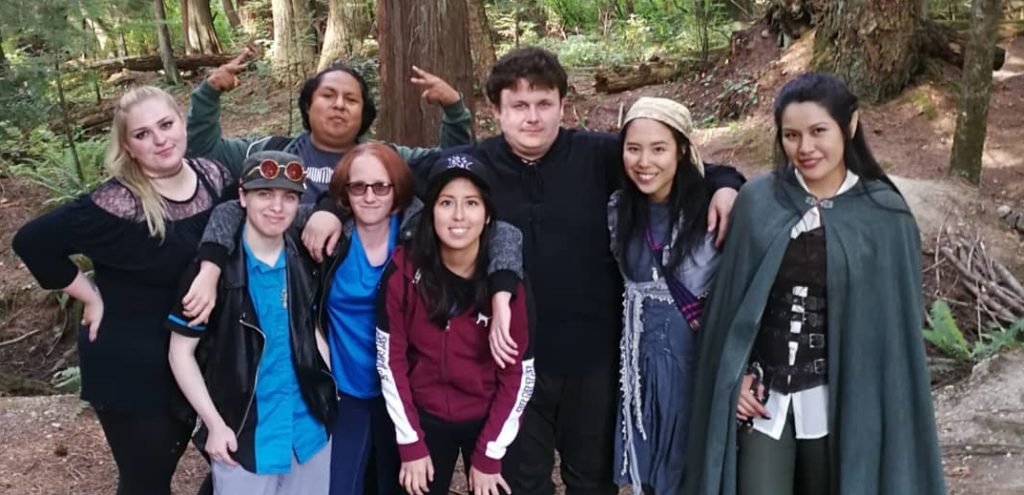
Kayla (bottom row, third from left) with her acting school classmates and volunteers.
Just like some actors can get stuck in character, some autistics can get stuck behind the mask of trying to appear typical. The internal struggles they are going through are hidden until they just shut down. And then everyone is confused.
Once I learned how to step out of character, I also learned how to consciously unmask and show my true self when I knew it was safe to do so. And something amazing happened.
I stopped shutting down as often, I didn’t constantly feel like my skin was too tight or my brain was going to explode. Between that and some fantastic classmates, who taught me that someone other than my family could accept me just the way I am, I was able to let myself stim in front of people again.
Stimming also helped me better focus on conversations and connect with people, because it was one less thing my brain had to constantly concentrate on.
I’ve been so fortunate to have people help me accept myself. Similarly, I have always enjoyed helping others with diverse needs, as well.
Over the years, I’ve done a lot of volunteering for Challenger Baseball, Peewee Special Olympics, and different charities that help diverse individuals.
By 2018, I had been out of college for a while and Canucks Autism Network was hosting a 10th anniversary party at Surrey Civic Plaza. My cousin happens to work for CAN and asked me if I wanted to volunteer.
I agreed right away. There is nothing I loved more than being around people who “got it” and wanted to help out kids who are like me and my brother. So I went with my cousin and CAN set us up to make sure I had everything I needed, including my sensory needs.
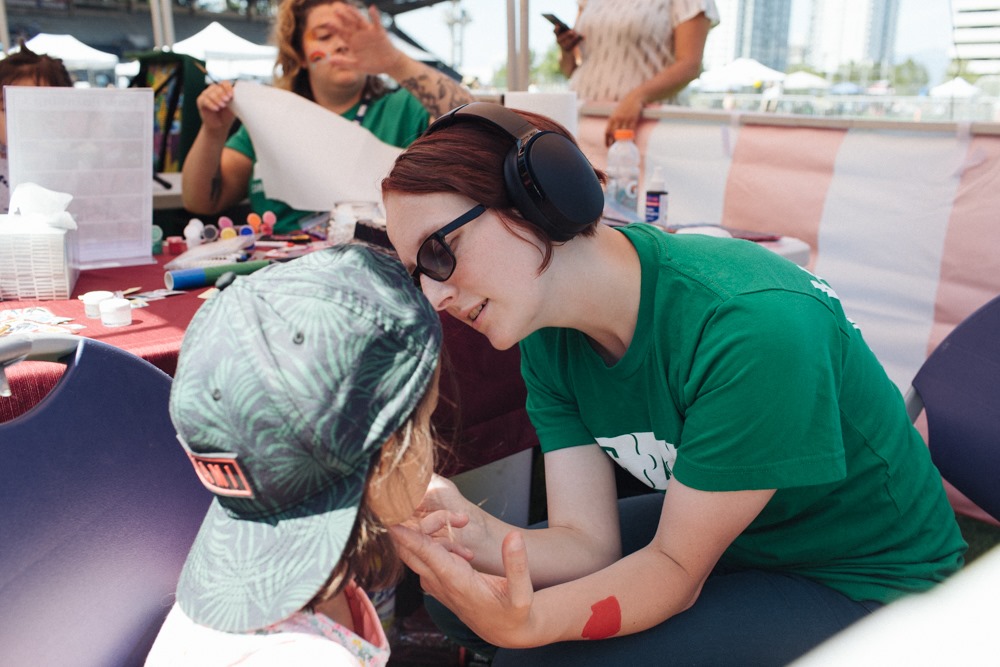
Kayla volunteering at the face painting station at the 2018 CAN Birthday Festival.
Everyone was super nice and great to work with. Near the end of the day, my cousin said, “You know, we have inclusive hiring, you should apply.”
So I applied. And since then, working for CAN has been amazing. One of my favorite pieces of feedback I ever received was, “We love putting you with anxious kids because they are always less anxious with you.”
Even though those kids don’t know that I’m like them – and that I’m coming from a place of experience – I think that on some level, they know I can understand them in a way a lot of the other workers can’t.
Outside of CAN, I also volunteer with Voices of Autism (VOA), a self-advocate advisory group for Pacific Autism Family Network (PAFN). Most recently, we started working on a peer mentorship project.
I was inspired to suggest it after going through a mentorship program where more experienced actors were paired with younger actors trying to get into the business. I got so much out of it and I thought, “You know what? I wish I had this for navigating my differences due to autism.”
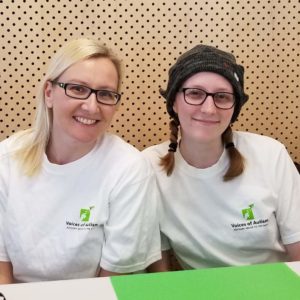
Kayla volunteering with Voices of Autism (VOA).
So I suggested it to my VOA manager and she took it and rolled with it. We just recently got started and other autistic people have been sending in questions to us. Individuals from the VOA board and membership who feel knowledgeable enough for each issue have been going on camera to film our answers. We’re hoping to have the videos be online with AIDE Canada soon.
For example, one question asked was about accessing post-secondary and finding a good institution that can support different ways of learning and different needs. I chose to answer that one and suggested that most schools will have an open house and that autistic students should go and talk to the teachers and see if they can envision being supported in that space.
I think it’s important that we progress from simply making people aware of autism to really increasing their understanding of autism.
When people understand more about how another person’s brain works and what they are going through/what they have been through, they have a much easier time accepting that person. Whether that’s a person from a different community or culture, or a person whose brain just works a little differently, everyone is valuable.
This means changing the way that people are viewed and presented to the public. Often times, we look at individuals with differences from a “disability model.” This is where you’re constantly focusing on what people can’t do and attempting to change that about them.
Before I got my diagnosis, I went to an employment support centre, and got some testing to figure out what I would need out of a job, and where I would be be the most successful. But at the end, when I was talking with the lady that I was assigned to, she basically said, here’s a giant list of things that you can’t do. Now let’s find an employer who’s okay with this. It was discouraging. If she had approached me and said, we need to work around some things, but here are all the things you can do let’s find a job that suits that, I would have felt much more encouraged.
What we need in order for people to truly accept individuals on the spectrum and with other differences is a “capabilities model”. This means looking at what society can do to make things easier for those with differences. It means identifying what people are capable of and using that as a starting point for how we make change.
At CAN, every time I run into a barrier as a support worker, it’s not, “okay you can’t do this job then.” It’s, “we know you can do this job, so let’s figure out how we can navigate around it so that you can do what you do.” One arena I was working at had electrical problems one day and the buzzer was constantly going off. I’m sensitive to high pitched noises and I ended up shutting down in the change room after handing my kid off to another worker.
And afterwards, Robbie called me and we talked about what happened and he said, “Okay, in the future – here’s our plan. If that should ever happen again, hopefully it won’t, you are allowed to leave the ice, get your headphones, and wear them on the ice so that doesn’t happen in the future.”
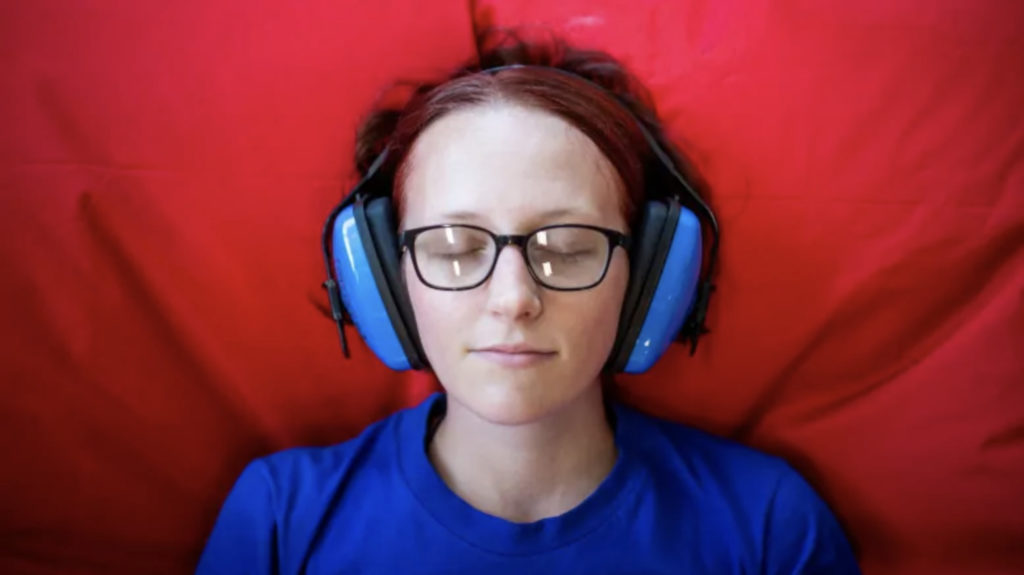
Kayla wearing noise cancelling headphones at City of Surrey’s Sensory Friendly Space. (Ben Nelms/CBC)
It’s a small concession, but it allowed me to feel like I could do my job. And was really nice and I felt super supported where in another environment, I may possibly have even gotten fired for reacting that way.
As an actor, representation in film is important to me. The industry is slowly getting there but having more diverse individuals trained to work in film would it change that much quicker. There just aren’t enough programs willing to train and work with the differences of autistic individuals and others with diversities.
You shouldn’t have to mask who you are to make your dreams come true.
We need to increase opportunities for autism training and understanding in the film industry. If autistic individuals who are aspiring to work in film (whether it’s acting or behind the camera) aren’t understood and can’t get training themselves, it severely limits the opportunities available to them.
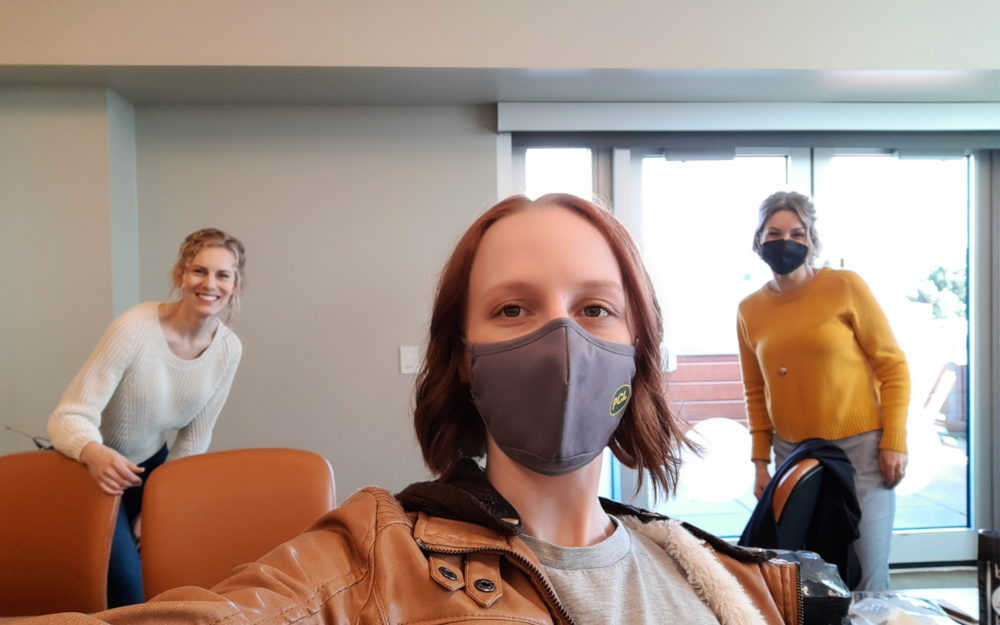
Kayla acting in a training video.
Beyond the film industry, there is an ongoing need to increase accessibility in all community spaces. I have also done some work consulting on accessibility with the City of Surrey. Through their partnership with CAN, they’ve done a great job working with capabilities by starting to make all of their buildings accessible – not just for physical differences, but for sensory differences as well.
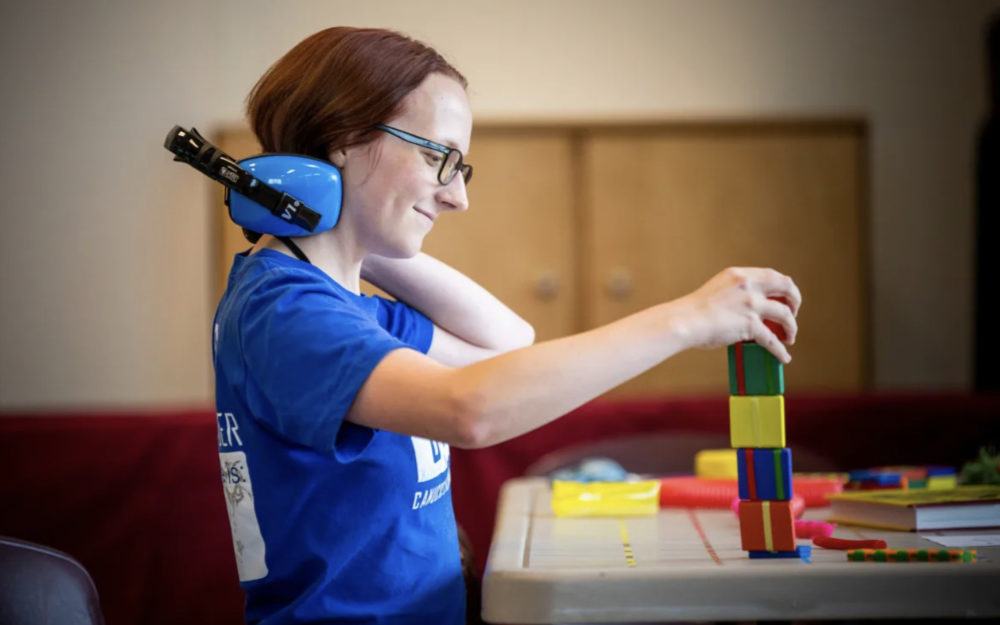
Kayla was hired by the City of Surrey to consult on sensory friendly environments in public spaces. (Ben Nelms/CBC)
Similarly, I love that many stores have sensory-friendly times. These are super helpful, as well. One concrete suggestion I would have is to keep the lineup dots on the floor, even after the pandemic. Often times, people don’t realize that many autistic individuals can get uncomfortable when strangers get too close. When lines get crowded and pushy, it can be overwhelming and uncomfortable even if you aren’t autistic. The lineup dots give people the space they need. And if someone isn’t on their dot, it easily gives you the authority to ask them for space.
Whether you’re in line at the grocery store, an aspiring actor, or simply trying to find a way to be comfortable in your own skin, you shouldn’t have to mask who you are.
That’s why I’m so proud to share my story, work for CAN, and be a part of groups like Voices of Autism.
It is only together that every child or youth on the spectrum and every autistic adult can have every opportunity to be who they want to be.
You may recognize Kayla as one of the nine autistic voices featured in our #AutismAcceptance video with EY this April:
For every comment or share of the video until Apr 30, EY will donate $2 to CAN! See the post on Facebook, Instagram, Twitter or LinkedIN!
Learn more about the voices featured in the video:
Natanya: “Autism acceptance means I have a job that I love”
Maxwell: “Listen to us and amplify our voices”
More from our #AutismAcceptance campaign with EY >>